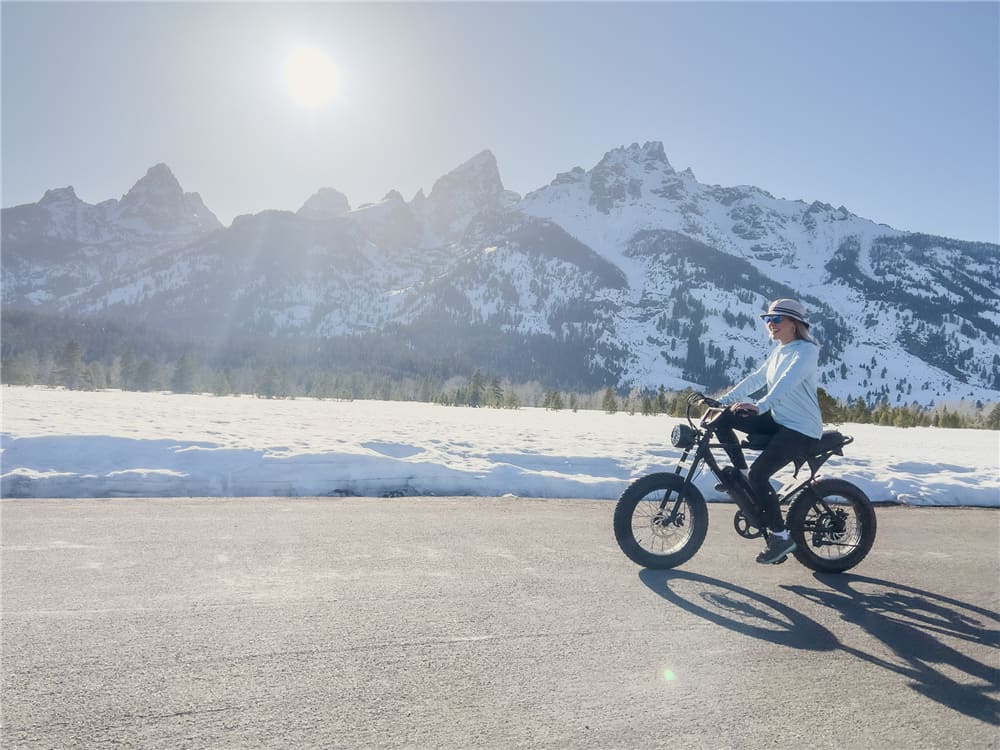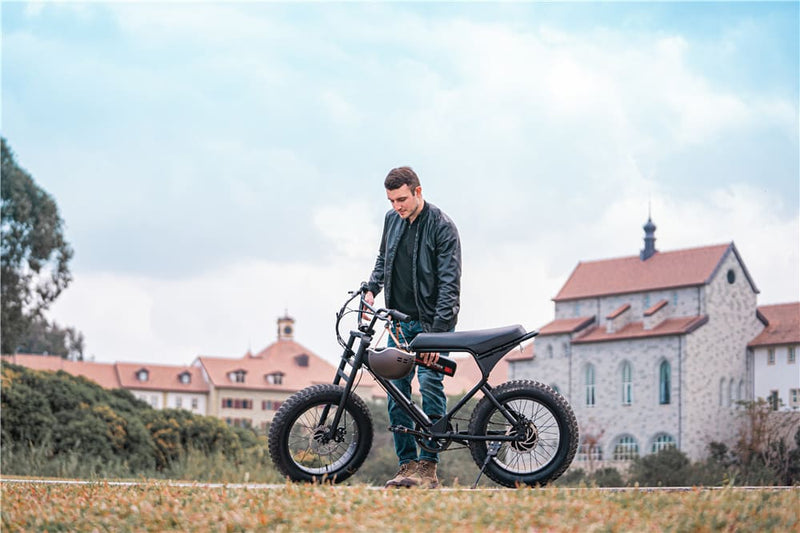Electric bikes, as they are commonly called, have recently become popular in California, a state known for its progressive stance on green technology. The state is one of the greenest states in the United States. These e-bikes give the rider an extra boost, making it easier to conquer hills and travel long distances. Given their growing importance on California roads and trails, it's critical to understand the laws governing their use in California.
California E-Bike Classes Explained
Based on their motor power and type of help, e-bikes in California are divided into three different classes:
- Class 1 E-Bikes: These are pedal-assist bikes with no throttle. The motor provides assistance only when the rider is pedaling, and this assistance stops when the bike reaches 20 mph.
- Class 2 E-Bikes: Equipped with a throttle, these bikes can propel the rider without the need for pedaling up to 20 mph.
- Class 3 E-Bikes: These are pedal-assist bikes without a throttle. The motor provides assistance only when the rider is pedaling, with the assistance stopping at 28 mph.

California limits the maximum motor power of all e-bikes to 750 watts.
Where in California Can You Ride an E-Bike?
Where you can ride depends on the class of e-bikes under the California Vehicle Code:
- Class 1 & 2 E-Bikes: You can use bike lanes and paths pretty much everywhere. Some places may allow you on sidewalks, but check local rules.
- Class 3 E-Bikes: You can use bike paths if local laws say so, but mostly, you'll be riding on roads and bike lanes. Sidewalks? Not unless the city says it’s cool.
- Public Roads: All e-bikes can ride on public roads.
- Sidewalks: Generally, no. But, some areas allow it. Always check first.
- Multi-Use Trails: This is tricky. It depends on the area, so check your local rules before riding.
What About Helmets and Age Requirements?
Here’s the deal with helmets and who can ride:
- Under 18? You MUST wear a helmet if you’re riding a Class 1 or 2 e-bike.
- Riding a Class 3? Helmet is a MUST, no matter how old you are.
- Class 3 Riders: You need to be 16 years old or older to ride.
So, if you're under 18, just put that helmet on. Not a big deal.
Do You Need a License or Registration?
Nope. In California, you don’t need a driver’s license or registration for e-bikes. They’re treated like regular bicycles under the law. So, just hop on and ride—no paperwork required.
Can You Carry a Passenger?
Generally, no. California doesn’t allow passengers on e-bikes unless the bike is specifically designed for it. Don’t try to sneak someone on your ride—it’s a no-go.
What About Riding Under the Influence?
If you're thinking about riding after a few drinks or under the influence of drugs, don’t. It’s illegal. You could face DUI charges, fines, and even jail time. Simple as that.
Can You Modify Your E-Bike?
Want to tweak your e-bike to go faster or add some mods? Don’t. It’s illegal to modify your bike to change its speed or motor power. Stick to the class you’re in and keep it legal.
E-Bikes on Public Transit
Good news here: Most public transit in California (buses, trains, etc.) allow e-bikes. But, there are some restrictions on size, battery type, and when you can bring your bike on. Always check with your transit provider before you ride.
Local Regulations You Should Know About
Some cities or counties have their own rules for e-bikes. These could include things like where you can ride or what safety gear you need. Always check local laws before heading out.
Are There Any Financial Incentives for E-Bikes?
Yes! California offers some pretty sweet incentives for buying an e-bike. Some local governments, air districts, and utility companies offer rebates. You might even be eligible for federal tax credits. So, check out the incentives before you buy.
E-Bikes in Parks and Recreational Areas
State parks have mixed rules about e-bikes. Some parks allow them, some don’t. It’s always best to check the park’s specific regulations before you go. Don’t assume.
Recent Legislative Changes Regarding E-Bikes
Recent legislative initiatives, such Assembly Bill 530, seek to grant electric bike riders a driver's license. The main objective is to address safety concerns, particularly those of younger riders who may not be aware with traffic regulations. For riders without a typical driver's license, this measure suggests a state-issued identification card and an online written test. Additionally, it aims to launch an e-bike training program in association with agencies including the California Highway Patrol and the DMV.
Recent Legislative Changes Regarding E-Bikes
California’s electric bike laws continue to evolve to keep up with the growing popularity and innovation in the e-bike market. In 2024, the state introduced AB 1774, a new law aimed at enhancing safety and clarifying regulations around e-bikes. Here's what you need to know:
-
Age Requirements for Class 3 E-Bikes: The new legislation now mandates that riders of Class 3 e-bikes must be at least 16 years old. Previously, this age requirement was set at 14 for Class 3 bikes, but with the updated regulations, younger riders will need to wait until they’re 16 to operate these high-speed bikes.
-
Helmet Laws: AB 1774 also aligns with existing helmet laws, reinforcing that all riders under 18 must wear a helmet when riding Class 1 or Class 2 e-bikes. For Class 3 e-bikes, regardless of age, riders must wear a helmet to comply with the law. This law also emphasizes helmet usage for safety, considering the higher speeds that some e-bikes can achieve.
-
Motor Power and Registration: The new legislation clarifies that e-bikes must meet the established motor power limits (750 watts) to qualify as an electric bicycle. Any bikes exceeding this limit might be reclassified as a different vehicle, such as a moped or electric scooter.
-
Local Authority Powers: One of the key updates in AB 1774 is the increased authority given to local governments in regulating e-bike usage. Local ordinances can now further restrict or regulate where e-bikes can operate, including limitations on bike lanes, multi-use trails, and sidewalks, depending on the area's infrastructure and safety concerns.
These changes aim to increase safety and ensure e-bikes are used responsibly while giving local municipalities more control over e-bike use within their jurisdiction.
For more details, you can view the full text of the bill here.
Introducing the Macfox X1: The Best Commuter Ebike
Macfox X1 is the best commuter ebike in the field of electric bicycles. Designed with aesthetics and utility in mind, this electric bike is ideal for city dwellers looking for a greener form of transportation. This e-bike is one of the best in its class, with a sleek design that speaks to its massive engineering, not just its looks.
Every ride is simple and fun with the amenities that the Macfox X1 is outfitted with. It is perfect for daily commuting because of its strong battery, which guarantees that users may travel long distances without often recharging. Additionally, the bike's user-friendly interface guarantees that both novice and experienced riders will have a pleasant riding experience.
The Macfox X1 complies with all requirements in the context of California's e-bike laws, guaranteeing that riders can take advantage of this e-bike's benefits while remaining in compliance with state laws.
Conclusion
Electric bikes are a green and efficient form of transportation that are well aligned with California's environmental goals. As Macfox e-bikes grow in popularity, it's critical for riders to know California's e-bike regulations. If all riders know and follow the rules, they will have a safe and happy e-bike experience.
FAQs
Q1: Are Ebikes with 1000 watts permitted in California?
No, California only allows e-bikes with a 750 watt maximum motor output.
Q2: What is the California e-bike law for 2023?
Assembly Bill 530, which seeks to improve safety by introducing a driver's license for riders of e-bikes, has received the majority of attention in 2023.
Q3: What kind of e-bikes are permitted in California?
In California, all three classes—Class 1, Class 2, and Class 3—are acceptable, but where you can ride them depends on how they are classified.


















